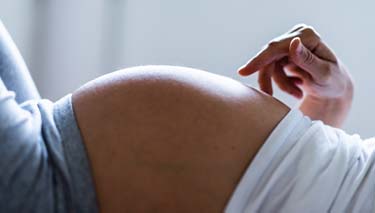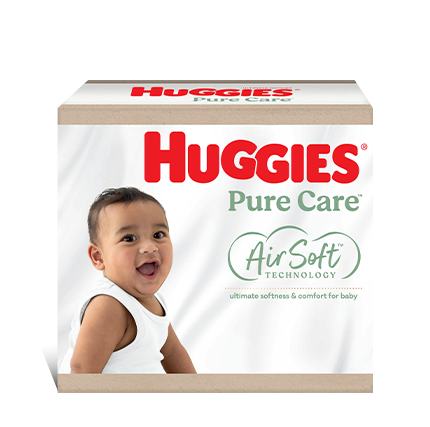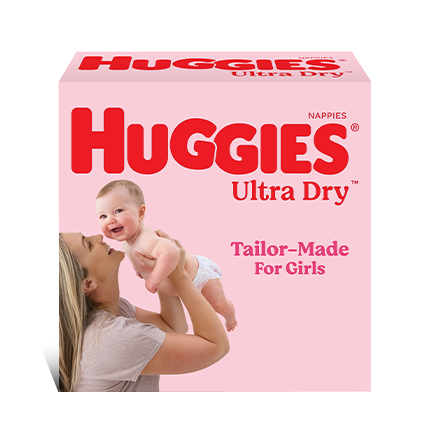Almost all of the advice around stretch mark treatment and removal stresses the benefits of prevention in the first place. But if you're one of the many women who did all that they could during pregnancy and still developed stretch marks, don t despair.
Stretch marks are such a common occurrence during pregnancy that they are considered normal and an almost inevitable result of skin stretching. Although stretch marks can look unattractive, that is where their impact ends. They don t cause any problems with general health and well-being. When they first form, stretch marks can appear very wide, indented, red and even purple in colour but with time they generally fade to the point of being barely visible.
What helps to get rid of stretch marks?
Moisturiser can help. Any emollient lotion will help to hydrate the skin and improve its elasticity. And although creams and lotions can t penetrate into the deeper (dermal) layers of the skin where stretch marks actually form, they do help to retain and replenish the moisture content in the epidermal (outer) skin layer.
Moisturiser also helps the skin to appear tauter, shinier and smoother, so there's a visual benefit as well. The current belief is that lotions used on new stretch marks may be more effective that when they have already faded.
Do nothing?
No matter how obvious they may be when they first form, don t despair, stretch marks do fade over time. The unfortunate truth is that some women are just more prone to them, especially if there is a genetic tendency within the family. If you are still pregnant and feel you need a little pick me up check the Huggies pregnancy pamper article for some lovely self indulgent tips you've earned them!
For women who gain a lot of pregnancy weight, are carrying multiples or an excess of fluid, stretch marks are more likely. Check here for more information on polyhydramnios.
If you do nothing other than just observe your stretch marks, then you will notice that the red/purple lines gradually fade to a silver/white colour and flatten. They will also feel less tight and open and instead, feel more crepey and soft to the touch. This may take a few years but it will happen, so be patient.
If you find yourself worrying about the appearance of your stretch marks and obsessing about them, it would be worthwhile speaking to your doctor. Some women do feel that their emotional and mental health is impacted when their physical appearance is not what they would like it to be. Getting a medical assessment can be very useful in terms of normalising the appearance of stretch marks. Treatment options, if needed, can also be discussed.
Natural stretch mark remedies
Make up your own moisturiser with blends of olive, almond or coconut oil. Use some essential scented oil such as lavender, rose or geranium to disguise the vegetable smell of the carrier oils. You won t need much, especially if you warm the oil in your hands before rubbing it in. Check pregnancy massage for more specific information.
Vitamin E cream has been shown to have positive results on improving the appearance of stretch marks. Look for a moisturising cream which has added Vitamin E or alternately, use Vitamin E capsules. Once pierced, the Vitamin E is exposed to the air and its potency starts to diminish. So pierce the capsule just before rubbing the contents into your skin.
Bio Oil is a product which has been clinically proven to help in the reduction of stretch marks and help with fading. It's been around for a very long time and is used by thousands of women with very positive results.
Retin- A
This is a form of Vitamin A. Another name for Retin-A is Tretinoin. There are many creams which contain Retin-A but which go under different trade or generic names. By law, manufacturers must state clearly on the label what is included in the product. Retin-A also comes in different concentrations; the higher the concentration the more effective it will be but so will the risk of side effects.
How does Retin-A work?
It helps the skin to renew itself in multiple ways by boosting collagen production and cell turnover, as well as assisting the skin to stretch out and reduce tearing. Other uses for Retin-A are for the treatment of acne, fine lines and wrinkles and skin discolouration.
It is generally available by prescription from a doctor. However, less potent concentrations of Retin-A can be found in some over the counter moisturisers and skin creams.
What's Useful to Know about Retin-A
- Retin-A comes in a cream form.
- Retin-A is not as effective on old stretch marks as fresh/new ones.
- Avoid any sun exposure if using Retin-A.
- Wash your hands after using cream containing Retin-A.
Warning about Using Retin-A
If you are pregnant or breastfeeding you cannot use Retin-A. It has been linked with birth defects and other complications. Read the labels of any product you intend using and speak with your doctor and/or a pharmacist if you are unsure about product safety. Check here for specialist pharmacist advice.
Glycolic acid
This is a product which contains AHAs Alpha Hydroxy Acid. Glycolic acid, when it is used in a topical (cream) form helps to support collagen production and skin elasticity. Collagen works like a type of networking bridge, connecting skin cells to each other. Unlike Retin-A, Glycolic acid is thought to be safe to use during pregnancy and lactation. Many skin care treatments, serums and moisturisers contain Glycolic acid in varying concentrations.
Some dermatologists recommend a combination of Retin-A and Glycolic acid as it is thought that there are dual benefits.
Vitamin C
Vitamin C has always been popular as a preventative option for all sorts of health issues. Many of the claims around its benefits have been based around common belief rather than science. However, there does seem to be some proof that Vitamin C supplements may help when it comes to preventing stretch marks and in their recovery.
If you're keen about using Vitamin C oral supplementation, speak with your doctor or a pharmacist. Although excess Vitamin C is not stored in the body and excreted in urine, it's still not wise to supplement vitamins and minerals unnecessarily.
Laser treatments for stretch marks
There are many different treatment choices when it comes to laser therapy. New research into lasers has meant that what was cutting edge a couple of years ago have been replaced by technology which is more effective and less invasive.
Pulsed dye laser
Another name for this type of laser is vascular laser, it works on a pulse mechanism where intense laser light is directed at the stretch mark for a carefully measured period of time. The best time to have pulsed dye laser is when the stretch marks are still red and before they have faded to silvery white.
If you have darker skin, pulsed dye laser is not considered as effective. When there is a bigger contrast between the colour of the stretch mark and the surrounding skin, the effects of the pulsed dye laser are more obvious.
Fractional laser treatments
This form of laser is considered most effective on older stretch marks which have lost their initial redness. When the stretch mark is still indented in the skin, fractional lasers help to resurface its edges and depth so that it is in line and even with the skin surrounding it.
Fractional laser treatments also work by increasing the collagen and elastin fibres in the skin. One side effect of this type of laser resurfacing is hyper pigmentation (darkening) of the surrounding skin and occasionally, scarring. So weigh up carefully if this is a risk you're willing to take.
Dermabrasion
Is a cheaper option but less effective in eliminating stretch marks than laser therapies. It involves going to a clinic which employs clinicians who are trained in the use of dermabrasion techniques.
There is generally some redness and tenderness following each session but generally not enough to impact on daily activities.
Dermaroller or Dermastamp
This involves the technique of a using a roller impregnated with tiny needles as it is rolled over the skin where the stretch marks are. Another name for this treatment is skin needling. Puncturing the skin down to the dermal layer is thought to stimulate the growth of new skin cells and collagen.
But be mindful that there is still some disagreement about the effectiveness of this treatment. Although it sounds reasonable in theory there is inconsistency when it comes to results.
Platelet Rich Plasma (PRP)
This is a relatively new treatment which is also being used in facial plastic surgery. It is appealing to many women because it involves using their own plasma/blood products rather than a synthesised or artificial product.
A blood sample is taken from your arm and then this is spun to separate the different blood cells. The platelet rich plasma and fibrin float to the top of the test tube and this is injected directly into the stretch mark. It is believed that PRP works because it supports the formation of the matrix between the skin cells and boosts the production of growth factor. This then helps to encourage the growth of collagen which in turn, tightens the skin.
Surgery
This is considered by most women to be a rather drastic solution. However, if you've finished having your children and are really affected by the appearance of your stretch marks then it may be an option you want to consider. Often called a mummy tuck or mummy makeover , an abdominoplasty involves an operation and a stay in hospital. A plastic surgeon makes a series of surgical cuts on the abdomen and removes the excess skin. When pulled taut and re-sutured into place, the tummy becomes flatter and tighter.
Cost of abdominoplasty
This starts with an initial consultation and referral from a GP to a plastic surgeon. Hospital stay, recovery, surgeon and anaesthetist's bills can add up to many thousands. Depending on the level of health insurance cover, rebates vary. Because abdominoplasty is considered a cosmetic procedure, it is not covered under Medicare and is only done in a private hospital.
What about all the stretch mark treatments?
Sometimes a combination of many treatments such as topical creams/lotions and different laser therapies are used in the treatment of stretch marks. Using a multi modal (or many modes) approach to treatment may provide the best result.
Last Published* May, 2024
*Please note that the published date may not be the same as the date that the content was created and that information above may have changed since.





















